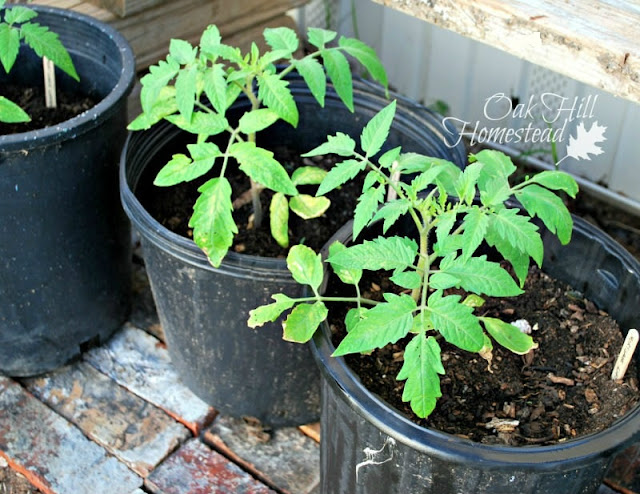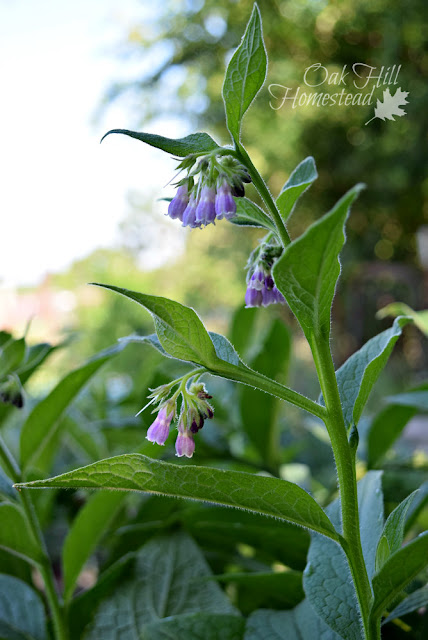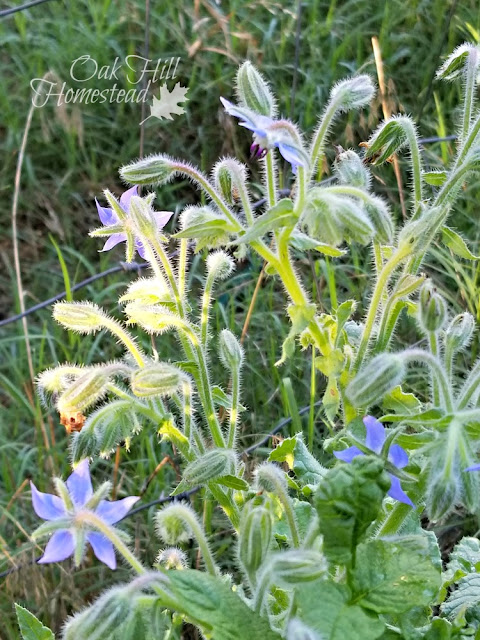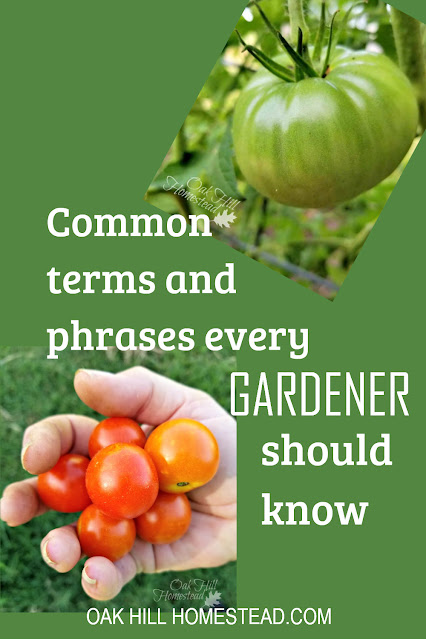New gardeners are often confused by some of the terms and phrases used in gardening. Gardening terminology might sound like a foreign language at first. Gardening has its own set of vocabulary.
If you're not sure what a certain garden term means, or are wondering about the difference between determinate and indeterminate tomatoes for instance, this glossary will help define those garden terms and phrases.
Gardening terms for beginning gardeners
Table of Contents
- Seeds
- Seed planting vocabulary
- Plant protection methods
- Pollination
- The difference between annuals and perennials
- Determinate and indeterminate tomatoes
- Bush beans and pole beans
- How plants reproduce
- Pruning
- Other gardening terms
- Composting
Like any hobby or vocation, gardening has its own vocabulary.
I've gathered together the words and terms that I've been asked about most often, and included their definitions below, organized into categories.
Seeds
Organic - Organic seeds are from plants grown organically in certified-organic soil. Growing organically means using natural methods without chemicals, synthetic fertilizers and pesticides.
Heirloom seeds - Also known as "heritage seeds," heirloom seed varieties must be "open-pollinated" and must grow true to type (unchanged, growing the same every year) from generation to generation. Many heirloom seed varieties are 50 years old or even older. For more information on gardening with heirloom seeds see Why You Should Garden with Heirloom Seeds.
Hybrid seeds - Hybrid seeds are developed (hybridized) from two or more heirloom varieties to produce plants with specific characteristics such as color or disease resistance. Unlike heirloom seeds, seeds that are saved from hybrid varieties won't grow true to type. In order to grow plants each year that are the same, you'd have to buy new seeds each year. Read more about hybrid, heirloom and GMO tomatoes here.
GMO - "GMO" stands for "genetically-modified organism." A GMO has had its natural DNA altered in a laboratory in a way that does not occur in nature. Plant, animal and microorganisms are given DNA from other species. It's not the same as developing a hybrid seed variety.
Seed scarification - Some seeds have such a hard coating that it's hard for the seed to germinate. These seeds can be "scarified" by using sandpaper or a nail file to nick the seed coat and weaken it, so the seed can germinate more quickly. In nature, seeds are scarified when an animal eats the plant and digests the seed, then spreading it in manure.
Seed stratification - some seeds require a period of cold weather before they will germinate. You can mimic nature by providing a cold period to stratify the seeds. Putting the seed container in your refrigerator or freezing for a period of time will usually convine the seeds that they have gone through the winter season and it's time to germinate.
Seed viability - the technical definition of viability is "the ability to live, or to survive." Seed viability refers to the life of the seeds, and their ability to germinate and grow. Seeds from each species of vegetable have a certain lifespan, and after that time, the seeds are no longer viable and will not germinate or sprout. Storing seeds properly will extend their viability. See Test Your Seeds' Germination Rate.
Seed planting vocabulary
Direct sow - Planting seeds in the ground is known as direct sowing. Follow the directions on the seed packet to know how deep to plant the seeds and the best location (in full sun, part sun or light shade). Scattering a packet of wildflower seeds in a meadow is also called direct sowing.
Seed starting - Although direct sowing is a form of seed starting, the term usually refers to planting seeds in pots or flats, to be transplanted to the garden later. This method is widely used with annual flowers and heat-loving vegetables such as tomatoes and peppers, which cannot be planted outdoors in the garden until after the last frost, to get a head-start on the growing season. Here's how to start seeds indoors.
Cotyledons - the first set of leaves that appear when a seed sprouts. This pair of leaves does not resemble the plant's real leaf shape. The second pair of leaves are called "true leaves" and look like the mature leaves.
Transplant - Transplanting means moving a plant from one location to another, either by repotting, planting a seedling in the garden, or digging up a plant and moving it. You can find out how to transplant tomato plants here.
Hardening off - Before you transplant seedlings into your garden, you'll need to "harden them off." This means getting your plants used to being outdoors in the fresh air, sunshine and breezes a little at a time.
Thinning - Especially with tiny seeds such as lettuce, we often plant seeds too close together. After seeds have sprouted and grown a bit, the plants should be "thinned" by removing extras and leaving the healthiest, strongest seedlings to grow with more space between them. Seed packets often recommend thinning so the seedlings are so many inches apart.
Slips - Sweet potato plants are started from slips instead of from seeds. Slips are grown from a mature sweet potato. Learn more about starting your own sweet potato slips here.
Hardiness zones, or garden zones - The USDA (United States Department of Agriculture) Hardiness Zone map helps American gardeners know what plants are best suited to the climate where they live.
The garden zone map divides the United States into eleven hardiness zones based on average temperatures. This information is most beneficial when planting trees, bushes and other perennial plants.
First and last frost dates - Gardeners need to know their first and last average frost dates in order to know when to plant frost-tender plants. The first frost in autumn will kill frost-tender vegetables unless the plants are protected.
The last frost date in spring signals the end of below-freezing weather. After the last frost, gardeners can plant heat-loving vegetables and herbs in the garden.
These dates are the averages of many years of weather data and are only guidelines, not a guarantee!
Plant protection methods
Cloche - A glass or translucent plastic cover used to protect frost-tender outdoor plants from frost, such as the bottom 2/3 of a milk jug turned upside down over the plant, or an upside-down bucket. Each individual plant is covered with a cloche.
Floating row cover - Non-woven fabric known as floating row cover is stretched over plants in a garden or field to protect from frost. A framework to hold the fabric slightly up off the plants might be used.
Low tunnel - A low tunnel consists of a framework that fits over plants growing in a garden row, and is covered with frost-resistant fabric such as row cover, frost cloth, frost blanket, etc.
High tunnel - Sometimes called a hoophouse, a high tunnel is a structure designed to protect plants from frost and inclement weather. A high tunnel is tall enough to walk under, made from a frame covered with greenhouse plastic.
Greenhouse - A greenhouse is a building constructed with glass or polycarbonate panels. The building is carefully laid out to receive the maximum amount of sunlight in the region. A true greenhouse includes heating and cooling mechanisms to maintain optimum temperatures for the plants inside.
Pollination
Pollination - Flowers must be pollinated in order to form viable seeds. Bees and other insects, birds, and the wind help move pollen from one part of a flower to another part, or from one flower to another flower, to accomplish fertilization (pollination).
Pollinators - Bees, butterflies, moths and other insects, birds, even bats and the wind itself are pollinators that move pollen from one part of a flower to another, or from flower to flower.
Open-pollinated - Plants that are produced by seeds that are naturally pollinated are considered "open pollinated." Natural pollination occurs when pollen is carried from flower to flower by insects, birds, animals, humans or other natural means. The resulting seeds are "heirloom seeds" as long as the pollen is from the same variety.
Self-pollinating fruit trees - Some fruit trees do not need another variety for pollination and are known as self-pollinating. To learn more about the importance of fruit tree pollination see this article from Stark Bros Nursery.
Cross pollination in fruit trees - Some fruit trees do require another variety of the same fruit growing nearby in order to produce fruit, known as cross-pollination.
For instance, apple trees need to have another variety of apple tree that blooms at the same time growing nearby. Insects carry the pollen from one tree to the other to the benefit of both trees.
Cross pollination in vegetables - When the pollen of one plant is transferred to a flower of another variety of plant, it can cause problems for vegetable gardeners who want to save seeds to grow the following year.
For instance, broccoli can cross-pollinate with other brassica varieties including cabbage and brussels sprouts, and some melon varieties can cross-pollinate with other melons. The resulting seeds will not grow true to type if planted and the fruit will be a cross of the two parents.
These cross-pollinated vegetables will not be apparent until the following year, not during the year that the cross-pollination occured. If you do not save seeds, cross-pollination will not affect your harvest.
The difference between annuals and perennials
Perennial - Perennial plants are cold-hardy and will live for several years. The growth may die back in winter but will grow again in the spring.
Annual - Annual plants complete their entire life cycle in just one year. They sprout, grow, produce seed (often in a "seed capsule" such as a tomato or melon), and then die.
Biennial - Plants that take two years to complete their life cycle are known as biennial plants. It takes two years to grow from seed and then to produce seed.
Determinate and indeterminate tomatoes
Determinate - This term is commonly applied to tomato plants. Determinate plants grow to a certain size, produce their fruit, usually in about a two-week period, and then give up for the rest of the season.
Determinate tomato varieties are preferred by people who can tomatoes, because the crop ripens all at once, over a relatively-short period of time.
Roma, the most popular canning tomato variety, is a determinate plant.
Indeterminate - In contrast to determinate varieties, indeterminate tomato varieties keep growing vigorously throughout the growing season and produce tomatoes during the whole season.
An indeterminate tomato plant might produce five tomatoes this week and a dozen next week but they produce all season long. Indeterminate varieties are usually grown by gardeners who want fresh tomatoes over the whole season.
Learn more about determinate and indeterminate tomato plants here, as well as the various sizes and varieties of tomatoes.
Bush beans and pole beans
Pole beans vs bush beans - Pole beans are grown on vining plants that are usually staked or trellised to keep them off the ground. Bush beans have more compact growth, do not climb on trellises and are more compact in size.
How plants reproduce
Propagation - Propagation refers to the various methods of propagating or reproducing plants, whether done naturally or on purpose by a gardener.
The most common form of propagation is by seed but other plants spread by their roots. Root divisions, layering, and cuttings are additional ways of multiplying plants.
Runners - Runners are sent out from some plants as a natural method of propagation. Strawberry plants multiply by sending out runners along the soil, which take root and grow new plants.
Many varieties of mint reproduce by sending runners from the roots which form new plants. Mint is often considered invasive for this reason, and can take over a garden or flower bed in a short period of time.
Suckers - Tomato plants grow suckers that many gardeners remove - in fact, if you ask two gardeners whether the suckers should be removed, chances are that one will say yes and the other will say no. However, suckers can be removed and replanted to grow a new plant.
To identify a sucker, look at the stem of the tomato plant where a spray of leaves begins, and you'll often find a sucker growing from this joint at a 45° angle. Find out how to grow a new tomato plant from a sucker here.
Suckers grow on other types of vegetable plants too, such as cucumber and pumpkin plants. These suckers are removed to allow the plant to channel its energy into producing fruit on the main stems, just like gardeners remove them from tomato plants. However, the time to remove these suckers varies depending on the kind of plant.
Vivipary - Occasionally you might find a tomato with sprouts growing inside - they might have even broken through the tomato skin. This can happen to any plant: a strawberry whose seeds have sprouted while still on the berry, or a pumpkin with sprouts growing inside when you cut it open. This is called "vivipary," or a "viviparous" plant.
It's a normal process, not uncommon, and nothing to be alarmed about. The seeds simply germinated in prematurely inside the fruit or vegetable, where conditions were perfect: warm and damp.
I even had a calendula plant whose flowers sprouted and formed more flowers on top.
Pruning
Deadhead - Removing spent flowers from a plant is known as deadheading. Dead flowers left on the plant will eventually produce seeds, while removing the dead flowers will encourage the plant to flower again.
Deadheading is usually done when the purpose of the plant is to produce flowers, such as rosebushes.
Pruning - Removing growth from a plant such as a fruit tree or a rose bush to produce a desirable shape or to remove old growth.
Other gardening terms
Intensive planting - This refers to planting seeds or transplants closer together than commonly recommended.
This method is usually used in raised beds or in "wide rows." Instead of planting in a single row, you plant in "blocks" similar to the square foot method (see the book Square Foot Gardening by Mel Bartholomew).
Succession planting - Planting one crop after another is called succession planting. As soon as the spring crops are finished (lettuce, for instance), you'd plant another crop (peppers, perhaps) in the same space.
Basically, this is crop rotation, but instead of rotating crop yearly, I do it throughout the garden season. I follow a 4-year crop rotation plan, in which certain types or families of plants are followed by another certain type/family.
Companion planting - Planting certain types of plants together or near each other can be beneficial to the plants themselves and to your garden as a whole.
Some plant combinations work together for their common good. Growing tomatoes, basil and marigolds together gives a three-way boost. The basil enhances the flavor of tomatoes, while the marigolds help to repel hornworms and other insect pests.
Not all plants are good companions though. Each type of vegetable has friends and foes.
Vertical gardening - Vining plants are usually encouraged to grow vertically instead of sprawling along the ground, so they take up less space in the garden and are easier to harvest.
Gardening vertically also helps to prevent rotting, which occurs when the produce sits on the wet ground, and insect damage by making it easier to spot pests before they attack. Stakes, cages and trellises are most often used to support plants growing vertically.
- Stakes might be wooden, bamboo or metal poles stuck in the ground.
- Cages are just that: a cage placed around the plant to hold it up, often made of wire fencing.
- A trellis is a larger structure that can support more than one plant if sturdy enough.
- Here are four ways to trellis tomato plants
Amending soil - The process of adding supplements, minerals and/or organic material to the soil to provide optimal growing conditions is known as amending the soil.
Volunteer plants - Volunteers are any plant that grows without being planted by a human in a designated place. Instead volunteers are often planted by birds, by the wind, and by plants we grew last year that went to seed unnoticed. Learn more about volunteer plants and what to do with them.
Bolting - Bolting is a term often used when discussing lettuce, cabbage and other plants that are harvested as leaves and greens. The plant's purpose is to produce seeds to reproduce itself even though gardeners grow the plant for its leaves.
Eventually the plant will "bolt" and send up a seed-stalk. The leaves often become bitter at this stage. Bolting is often triggered when the weather warms up, since most greens are cool-weather crops.
Composting
Compost - Organic material that naturally occurs when garden waste and kitchen waste decompose. The process can be hurried along by a gardener who combines these materials and tends them purposefully. Find out the four reasons why you should be composting.
Humus - Compost and humus are both decomposed organic material, but humus is the technical term for finished compost.
Mulch - Mulch isn't the same as compost, although the two are often confused by beginners. Mulch is a protective layer of organic or inorganic material placed on top of the soil around growing plants. Mulch helps to retain moisture and prevent weeds from growing.
Straw, wood chips, and dried grass clippings are some of the organic materials used as mulch. Inorganic materials such as plastic and weed barrier cloth are also used. A thick layer of finished compost can also be used as mulch.
If you have any suggestions for additional garden terms or phrases that you think should be included, please let me know.
To contact me, click "About" in the menu at the top of this page, then choose "Contact." If you're using a mobile device, click on the "hamburger icon" - the three lines on top of each other - for the menu.
For more gardening and self-sufficient posts like this, subscribe to my weekly-ish newsletter The Acorn and join me on Facebook, Instagram and Pinterest. I'd love to see you there!
How to Build a Raised Bed Garden
How to Grow Vegetables in a Shady Garden
What to Do with Green Tomatoes in the Fall
~~~~~
Facebook | Pinterest | Instagram | Subscribe












.jpg)











